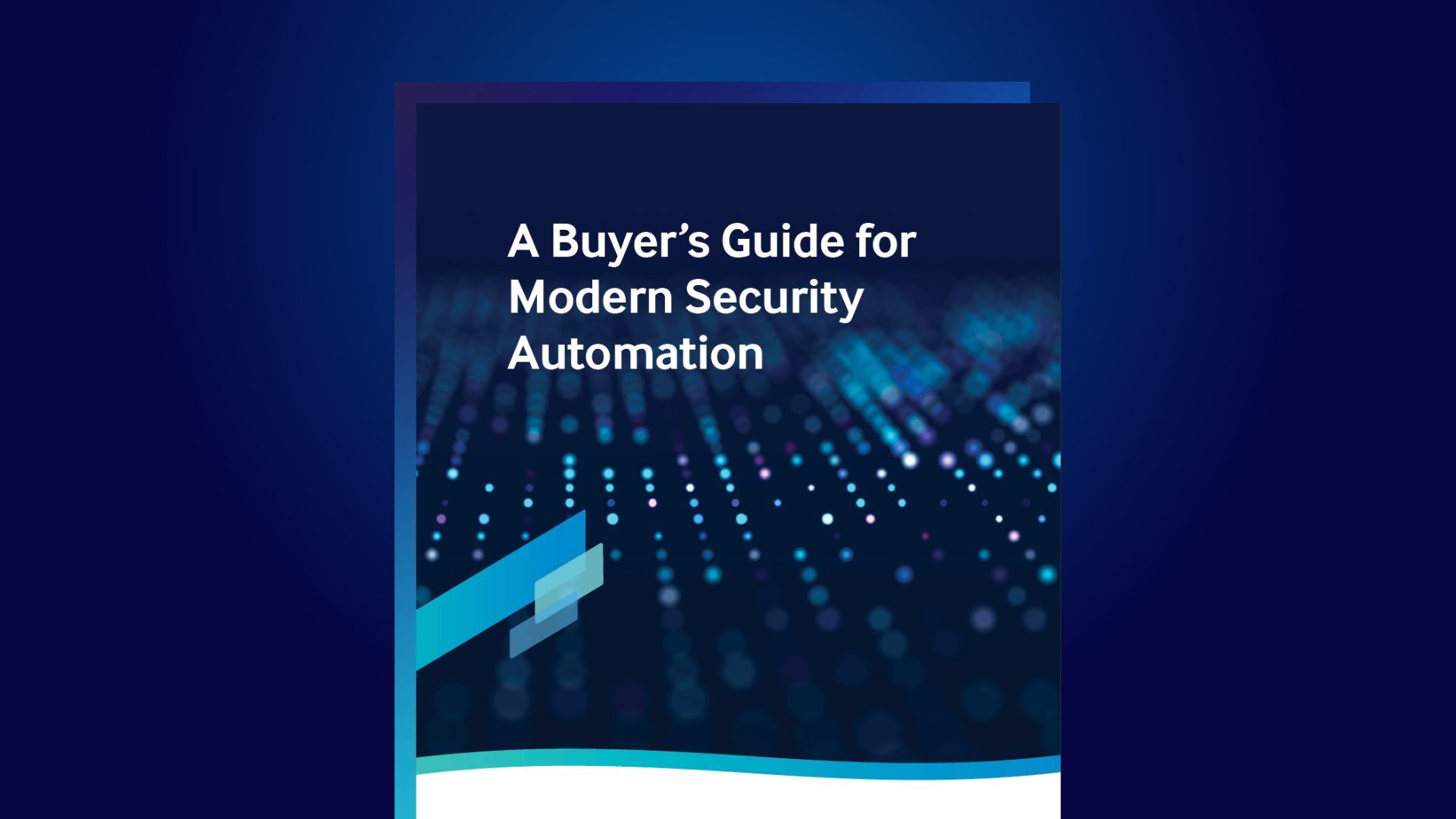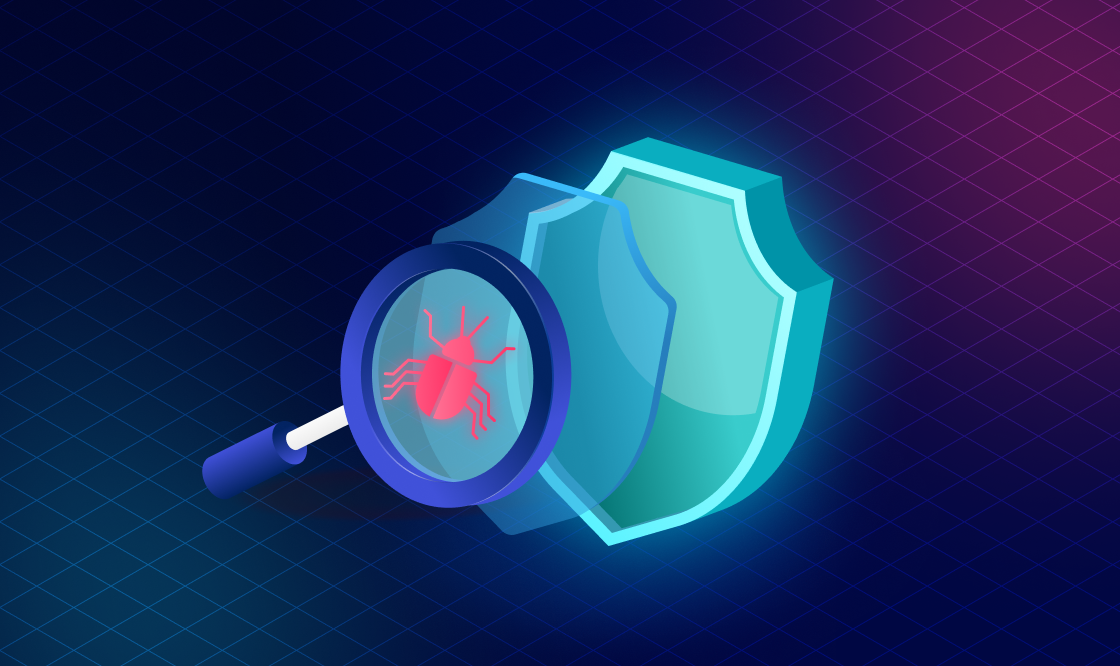How to Automate Vulnerability Management Processes
Vulnerability lifecycle management is critical for organizations to avoid new vulnerabilities that could compromise their overall security posture and, ultimately, business mission. A strong vulnerability management program is important within the Security Operations Center (SOC). But let’s dive deeper into this ongoing process, what vulnerabilities are, and what vulnerability management tools are available to improve them.
What are Cybersecurity Vulnerabilities?
Cybersecurity vulnerabilities are weaknesses in a system or network that malicious attackers can exploit to gain unauthorized access. Vulnerabilities can occur across networks and systems, including websites and web applications, cloud computing platforms, mobile applications and devices, operating systems, IoT devices and more.
Vulnerabilities are found during penetration testing and security audits, but they are also discovered by accident when a new feature is being developed or when an old piece of code is being updated.
Types of Cybersecurity Vulnerabilities
Some common cybersecurity vulnerabilities found in an organization’s systems are:
- Unpatched, outdated software
- Zero-day vulnerabilities
- Security misconfigurations
- Unsecured APIs
- Weak user credentials
- Broken authentication
- SQL injection
How are Cybersecurity Vulnerabilities Ranked?
Software vulnerabilities are assessed and given a Common Vulnerability Scoring System (CVSS) score, from 0.0 to 10.0, to communicate the severity. The National Vulnerability Database (NVD) has associated severity rankings based on the CVSS v3.0 scores:
| Severity | Base Score Range |
| None | 0.0 |
| Low | 0.1-3.9 |
| Medium | 4.0-6.9 |
| High | 7.0-8.9 |
| Critical | 9.0-10.0 |
What is Vulnerability Management?
Vulnerability management is the process of finding, assessing, prioritizing and remediating vulnerabilities on a network or system. The objective is to close the gaps that could lead to an attack on your infrastructure.
The goal of vulnerability management is to manage risk. Vulnerability management identifies weaknesses in systems to correct before a threat actor exploits them.
Challenges of Traditional Vulnerability Management
1. Labor Intensive
Vulnerability management processes are labor intensive. Security teams must continually import, assess, and validate new vulnerability data. Then, teams need to pass mitigation efforts through for approval. Then, you must delegate the next steps and conduct follow-ups and validation—all time-consuming when done manually.
If an organization lacks the available capacity in the existing staff, these extensive monitoring and management efforts are difficult to maintain. If they’re not prioritized, organizations reduce their ability to protect themselves from known vulnerabilities.
2. The Longer the Process, the Higher the Risk
The longer the vulnerability monitoring and management process is, the greater the opportunity attackers have to breach an underlying network and do significant damage. This is not unlike dwell time for threat response; the slower security teams close gaps, the more opportunity there is for the unsavory to elicit greater damage.
3. Varies with Each Organization
There are plenty of great solutions providers out there that have tried to provide a full lifecycle of scanning, reporting, and other various elements of a vulnerability management system. However, it’s important to keep in mind that, like any other process within a SOC, no two organizations will approach vulnerability management in the same way.
In other words, one company’s method of scanning and reporting on vulnerabilities is not reflective of the average corporate enterprise environment. Every organization has nuances that it may have to report on. For example, perhaps an organization groups its business units in a specific way and needs to report on them accordingly. Or, something that may appear very simple in the eyes of a SOC vendor, such as an IP address, may store mission-critical data or intellectual property for an organization and must, therefore, be intensely monitored.
Every organization prioritizes, monitors and manages these specific elements based on context, yet many vulnerability management tools today don’t scan or report based on this context.
Guide to Implementing Automated Vulnerability Management Processes
1. Build a Unified Asset Inventory
Automation starts with visibility. Centralize all asset data—across on-prem, cloud, and hybrid environments—into a single, normalized view. Tools like CMDBs, cloud APIs, and network scanners can feed into Swimlane Turbine to create a dynamic asset inventory that updates automatically as infrastructure changes.
2. Incorporate Business Context
Not all vulnerabilities pose equal risk. Automate the enrichment of vulnerability data with business context, like asset criticality, data sensitivity, or regulatory scope. Swimlane enables correlation between technical vulnerabilities and their potential business impact, helping SOCs prioritize more effectively.
3. Continuously Monitor for Vulnerabilities
Integrate continuous scanning tools (e.g., Tenable, Qualys, Rapid7) with your SOAR platform to ensure real-time ingestion of new vulnerabilities. Swimlane Turbine automatically pulls in scan results, correlates them with asset data, and initiates contextual workflows without analyst intervention.
4. Automate Prioritization and Remediation
Use automation to dynamically assign CVSS scores and business impact values to each vulnerability. Based on the risk, Turbine can route issues to the correct remediation teams, create tickets in systems like Jira or ServiceNow, or even initiate automated patching via EDR or configuration management tools.
5. Test and Verify Patches
Automatically launch a verification workflow after a patch is applied. Swimlane can integrate with endpoint management tools or run remote scripts to validate that the fix was successful and ensure the vulnerability is no longer present in future scans.
6. Generate Real-Time Reports
Dashboards and reports should be live, not static. Use Swimlane to auto-generate real-time metrics on patch rates, risk trends, team performance, and compliance. These reports can be tailored for different audiences—from technical staff to executive stakeholders—and sent on a schedule or triggered by key events.
4 Benefits of Automating Vulnerability Management
1. Accelerated Detection and Response
Automation drastically reduces the time from vulnerability discovery to remediation. Instead of waiting for manual validation, workflows can kick off immediately, allowing faster triage and patching based on severity and business impact.
2. Reduced Alert Fatigue
By automating prioritization based on contextual risk factors, security teams don’t have to sift through endless lists of vulnerabilities. This reduces alert fatigue and allows analysts to focus on high-risk threats.
3. Improved Accuracy and Consistency
Automated workflows ensure consistent application of policies across all assets. There’s less risk of human error, and repetitive tasks like ticketing, notifications, and remediation can be done reliably 24/7.
4. Full Visibility Across the Enterprise
Integrated automation platforms like Swimlane Turbine ingest data from vulnerability scanners, threat intelligence platforms, and asset inventories to give security teams a real-time view of their risk exposure across all environments.
Vulnerability Management Automation Best Practices
- Integrate Broadly: Pull in data from scanners, asset inventories, ticketing systems, EDR tools, and more. The more context you have, the smarter your automation.
- Design for Flexibility: Customize workflows to match how your organization operates, not how vendors think you should. Swimlane’s low-code approach allows rapid iteration to meet evolving SOC needs.
- Enforce SLAs Automatically: Use timers and logic in automation to escalate unresolved vulnerabilities and enforce patch timelines.
- Continuously Optimize: Measure your automation workflows. Track key KPIs like mean time to detect (MTTD), mean time to respond (MTTR), and false positive rates. Tune workflows based on performance.
- Test in Staging: Before rolling out any auto-remediation processes, test them in a safe environment to avoid breaking critical systems.
What are Vulnerability Management Tools?
There are solutions available that automate vulnerability scans and assist teams to make sense of vulnerability reports, so information is more easily accessible and human-readable. It adds important contextual data leveraging prior scan results, analysts’ notes, and known and accepted risk elements.
Low-code security automation assists your organization with better tracking of assets and risk management. It provides full lifecycle management to continuously identify risks related to unpatched, misconfigured, and unknown systems within an entity. Endless integrations with vulnerability management tools like Tenable and Qualys streamline preexisting processes with automation.
With low-code security automation, you can:
- Deploy an advanced Vulnerability Management Program that can dramatically reduce risk
- Build gated processes and workflows into a vulnerability management program
- Integrate with virtually any other security technology, process, system, or tool
- Continuously identify and track organizational assets automatically
- Transform business requirements into a successful vulnerability management program
Choose Swimlane Turbine for Automated Vulnerability Handling
Swimlane Turbine can work within any threat and vulnerability management program, no matter how unique. The powerful workflows can be easily customized to meet any use case or business processes in use now or in the future.
To get started, request a demo today!
Automated Vulnerability Management FAQs
What is the difference between SIEM and vulnerability management?
The difference between SIEM (Security Information and Event Management) and vulnerability management lies in their core functions and focus areas.
SIEM:
- Aggregates and analyzes log data from multiple sources.
- Detects and responds to security incidents.
- Offers real-time monitoring, alerting, and event correlation.
- Supports compliance reporting and historical data analysis.
- Primary Use: Detecting threats and maintaining compliance across your infrastructure.
Vulnerability Management:
- Focuses on identifying, assessing, and remediating vulnerabilities in systems, applications, and networks.
- Includes scanning, classification, prioritization, and remediation tracking.
- Primary Use: Proactively preventing breaches by addressing known weaknesses.
What is the difference between SOC management and vulnerability management?
SOC management oversees the operations of a Security Operations Center, which monitors, detects, and responds to security incidents 24/7. It focuses on the entire security posture of an organization.
Vulnerability management, on the other hand, focuses specifically on identifying, prioritizing, and addressing vulnerabilities in software, systems, and networks to reduce attack surfaces.
How do you leverage vulnerability data effectively?
Organizations can strategically leverage vulnerability data from both internal scanners and external sources like CVE databases. To do this effectively:
- Analyze data in context with active threats.
- Assess how vulnerabilities relate to your current environment.
- Prioritize based on severity, exploitability, and asset value.
- Use automated platforms for real-time analysis and response.
The key is not just collecting data—but transforming it into actionable insights for remediation.
What is risk based vulnerability management?
Risk-based vulnerability management (RBVM) is an approach that prioritizes vulnerabilities not just based on severity scores (like CVSS), but on the actual risk they pose to your specific environment. It considers factors such as:
- Asset criticality (how important the affected system is)
- Exploitability (likelihood of being exploited in the wild)
- Threat intelligence (is the vulnerability being actively targeted?)
- Business context (what would be impacted if exploited?)
By focusing on real-world risk rather than treating all vulnerabilities equally, RBVM helps security teams allocate resources more effectively and remediate what matters most—faster.
What is the difference between patch management and vulnerability management?
Vulnerability management identifies and prioritizes security flaws.
Patch management fixes them by applying updates.
Think of it this way: Vulnerability management finds the cracks—patch management seals them.
Discover our Northland Power case study to discover how they automated 92% of critical vulnerabilities with Swimlane.

Get Your Buyer’s Guide for Security Automation
Cut through the complexity and frustration of SOAR and security automation solutions. This guide analyzes the wide range of security automation platforms available today, so you can find the best solution for your team.


